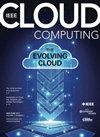微服务架构的数据访问模式建议
Q1 Computer Science
引用次数: 0
摘要
选择从数据库表中访问数据的模式对于微服务最大化分布式体系结构的好处至关重要。传统上,微服务是使用共享表访问模式(通常称为CRUD模式)设计的。最近,人们对应用其他模式(如CQRS)越来越感兴趣。在这项工作中,我们提出了一个系统,根据服务执行的事务中读写操作的分离,为微服务推荐最合适的模式。本文章由计算机程序翻译,如有差异,请以英文原文为准。
Data Access Pattern Recommendations for Microservices Architecture
The choice of pattern of data access from database tables is critical for a microservice to maximize benefits of distributed architecture. Traditionally, microservices have been designed using shared table access pattern commonly referred to as CRUD pattern. More recently, there has been a growing interest in applying other patterns like CQRS. In this work, we propose a system that recommends the most suitable pattern for a microservice as per the separation in read and write operations in the transactions performed by the service.
求助全文
通过发布文献求助,成功后即可免费获取论文全文。
去求助
来源期刊

IEEE Cloud Computing
Computer Science-Computer Networks and Communications
CiteScore
11.20
自引率
0.00%
发文量
0
期刊介绍:
Cessation.
IEEE Cloud Computing is committed to the timely publication of peer-reviewed articles that provide innovative research ideas, applications results, and case studies in all areas of cloud computing. Topics relating to novel theory, algorithms, performance analyses and applications of techniques are covered. More specifically: Cloud software, Cloud security, Trade-offs between privacy and utility of cloud, Cloud in the business environment, Cloud economics, Cloud governance, Migrating to the cloud, Cloud standards, Development tools, Backup and recovery, Interoperability, Applications management, Data analytics, Communications protocols, Mobile cloud, Private clouds, Liability issues for data loss on clouds, Data integration, Big data, Cloud education, Cloud skill sets, Cloud energy consumption, The architecture of cloud computing, Applications in commerce, education, and industry, Infrastructure as a Service (IaaS), Platform as a Service (PaaS), Software as a Service (SaaS), Business Process as a Service (BPaaS)
 求助内容:
求助内容: 应助结果提醒方式:
应助结果提醒方式:


